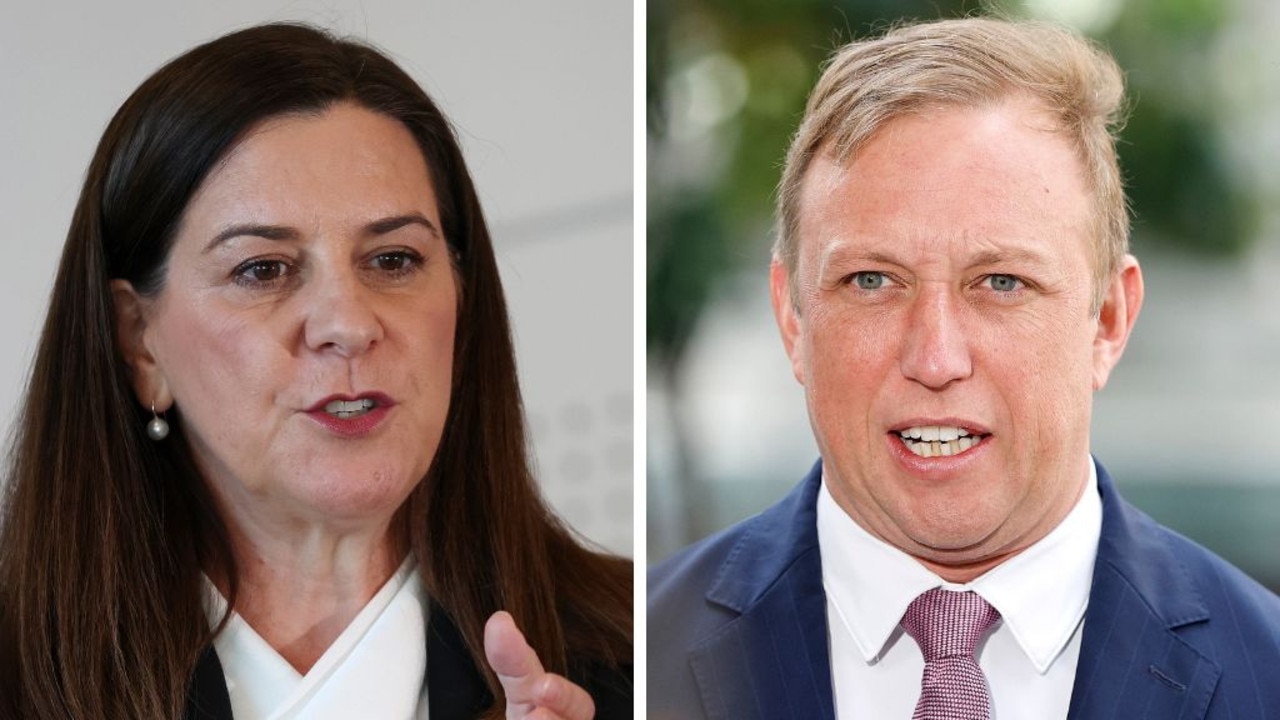Aerial photos reveal scale of devastation on Fraser Island after bushfires
Aerial views show parts of Fraser Island stripped bare by fire while waves black with ash lapped the shore.
QLD News
Don't miss out on the headlines from QLD News. Followed categories will be added to My News.
Some of Fraser Island’s famous wildlife could be harmed or starving conservationists fear, as bushfires on the island continue burning for an eighth week.
Flying over the island on Saturday, conservationists said they were “fighting back tears” at the scale of the devastation.
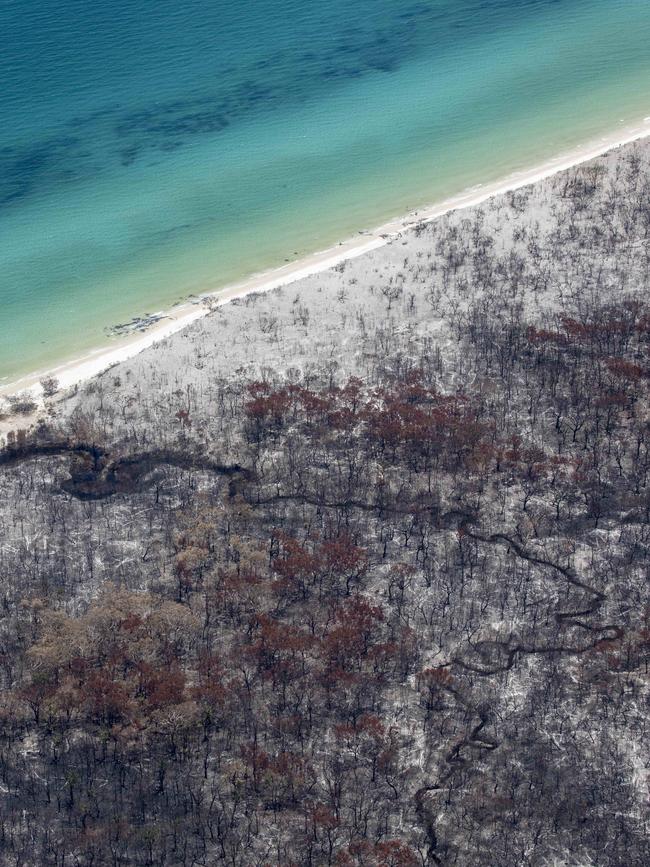
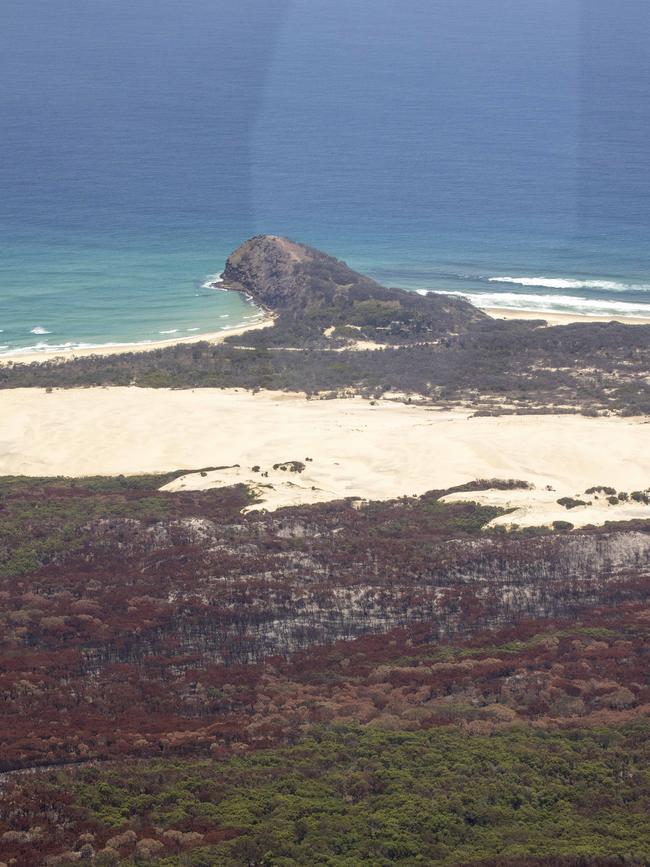
The Fraser Island fire has been burning for more than seven weeks, and razed through at least 50 per cent of the world-heritage listed site.
Aerial views show parts of the World Heritage site stripped bare by fire while waves black with ash lapped the shores of the island.
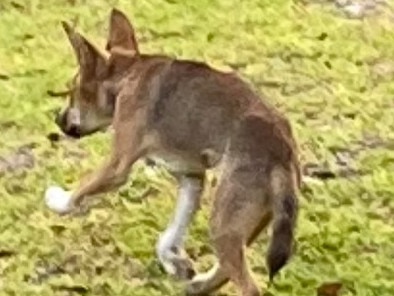
Residents at Orchid Beach – on the north east of the island – said they had seen dingo territory wars.
“There were some mothers that came in and were belting up the pups,” the Courier Mail was told.

“From six and there were four and now … there’s only one or two.”
Save our Fraser Island Dingos public relations officer Cheryl Bryant said the situation highlighted the need for on the ground support.
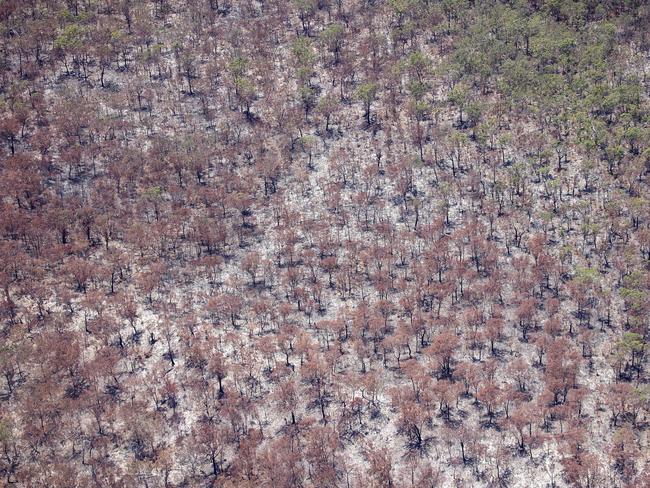
“We really need on the ground surveillance when they open it up and have a look and see,” she said – hoping the December 14 opening date was not “too late”.
Fraser Island will remain closed to visitors until December 14, with some parts of the island restricted until late January.

The Humane Society International (HSI) – one of the world’s top animal protection organisations – said in a Facebook post it was “monitoring the distressing situation on K’gari (Fraser Island)”.
“The fallout from such heavily disrupted ecosystems and potential food shortage for K’gari’s famous dingoes will require close monitoring for months to come and we are on standby to provide any assistance needed,” the group said in a statement on Facebook.
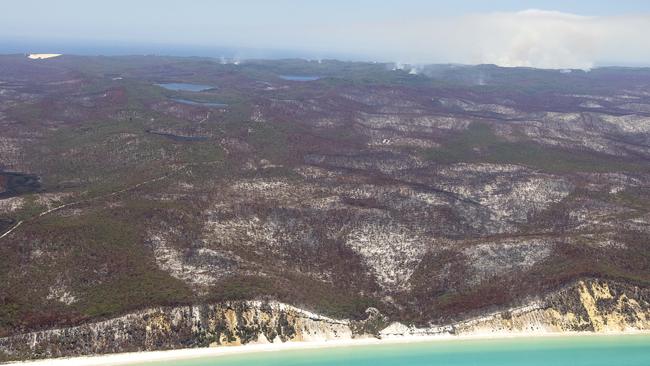
“We met with key staff from the offices of Minister for Environment, Meaghan Scanlon, and Minister for Fire and Emergency Services, Mark Ryan, along with the Queensland Parks and Wildlife Services and Queensland Fire and Emergency Services,” the group said in a post.


“We were briefed that the immediate impacts on wildlife welfare may be far less than we witnessed during the Black Summer fires due to the slow-moving nature of the fire which may have allowed more animals to escape.”

HSI said it was concerned about the potential loss of native wildlife and would provide assistance “if required” when the island reopens.
Fraser Island is home to 601 species of native animals and 918 species of native plants, according to Department of Environment and Science data.
Dr Patrick Norman, a researcher from Griffith’s Climate Change Response Program, previously said due to its size the Fraser Island fire would have affected a range of unique flora and fauna.
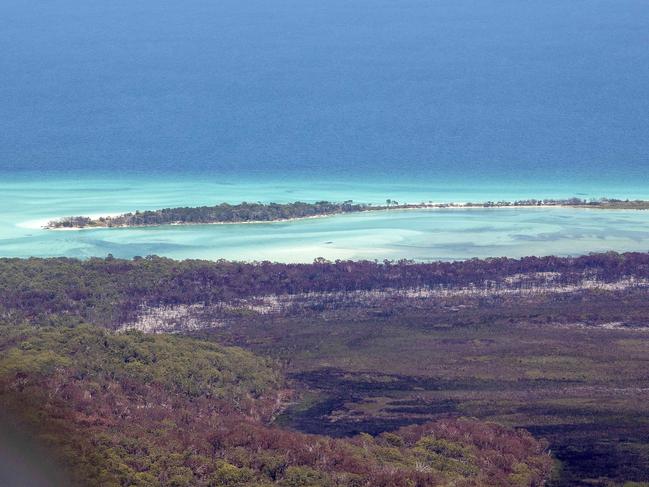
From satellite imagery and ecosystem mapping, Dr Norman said he estimated the 76,000ha burnt by fire up to Monday could be broken down into about 37,000ha of wallum heath, 16,000ha of dry eucalypt forest dominated by scribbly gum, about 7500ha of dune vegetation and 3500ha of wetlands.
“These communities are well adapted to fire, however the size and extent of these burnt areas in combination with the 2019 blazes, means that much of this habitat has been impacted on island,” he said.
“It’s just quite devastating for the area.”

The Department of Environment and Science has now established a dedicated recovery team, made up of ecologists, threatened species and wildlife experts and Butchulla Aboriginal Corporation representatives, to assess the impacts of the fire on the island’s environmental and cultural assets.
“It is focused on assessments of natural environmental and cultural values, and tourism recovery including risk assessments and reopening the island when safe.,” DES said in a statement
“Desktop assessment work has commenced and will be complemented by on ground evaluations using helicopter access when it is safe to do so and when the QFES led IMT permits the team to access,”
“Rangers are keeping an eye on and assisting with any wildlife matters and QPWS has trained rangers on the island to assist if needed.”
“Cultural and dingo health checks have also been completed by representatives of the Butchulla people.”
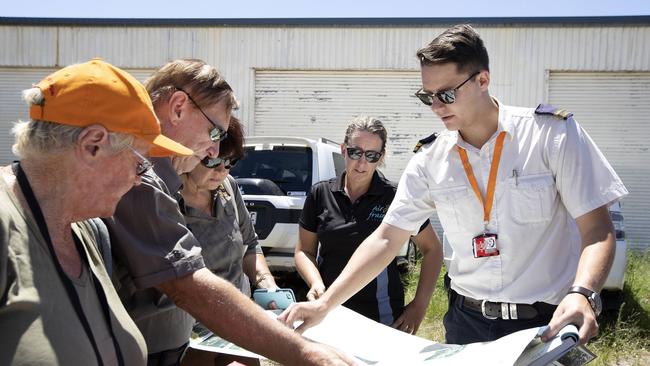
DES also said “December 14 is not a set date for any matter … that date is simply indicative when advice to campers will be updated” – referring to the island’s current closure.
The traditional owners of the Island, the Butchulla Aboriginal Corporation, said they were concerned cultural sites may be irreparably damaged or even destroyed.
“We have concerns for many iconic species and places on the Island that not only attracts many visitors each year but are also very important to Butchulla people,” BAC director Jade Gould said.
BAC said it has dedicated resources to help QPWS and QFES in response to the fires including managers, Land and Sea Rangers and Cultural officers.
The BAC “welcomed” the Premier’s announcement of a review of the management of the island, the statement said.
More Coverage





